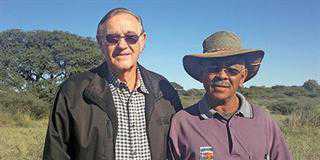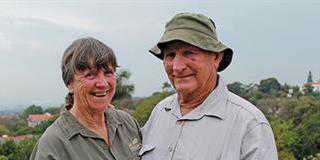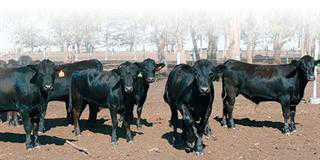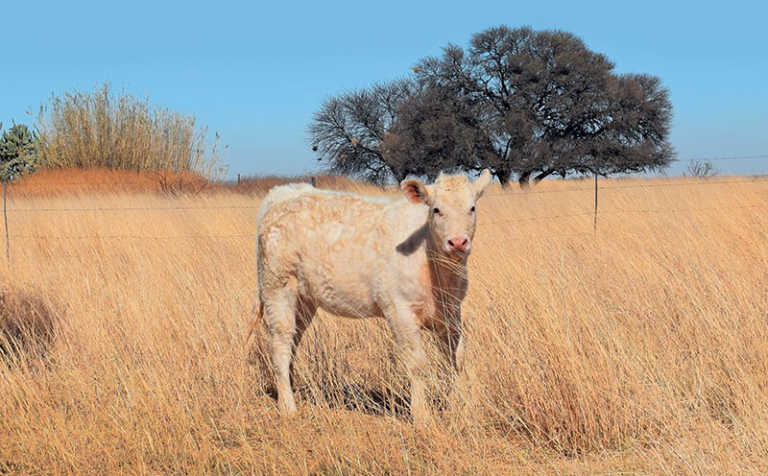
Photo: Courtesy of Charbella Charolais Stud
Clara Bruwer, who farms 60km north of Vryburg, recently became the first Charolais stud breeder in South Africa to use in vitro fertilisation to enhance her herd genetics.
She achieved this milestone just four years after establishing her Charbella Charolais stud.
Clara farms with her husband, award-winning Brahman breeder, Heinrich Bruwer, on their Grandview, Lovedale and Excelsior farms. Her in vitro calves were bred on the Lovedale farm.
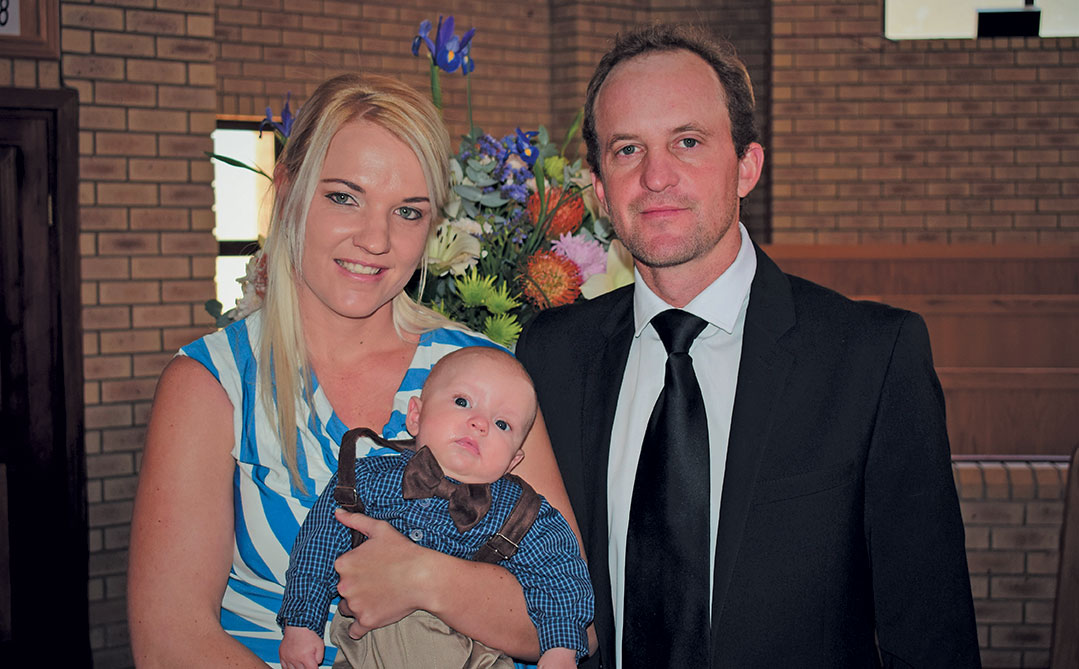
Why in vitro fertilisation?
Clara’s initial aim was to use her Charbella stud to breed bulls for her father, Barry Burger, for use in his commercial beef cattle herds.
It wasn’t long, however, before she began expanding her stud to meet the increasing demand for Charolais bulls amongst commercial breeders in North West. Clara attributes the breed’s growing popularity to its performance as a terminal sire in cross-breeding.
“The problem, however, is that the Charolais gene pool in South Africa is relatively small. So, to ensure long-term sustainability and profitability, I decided to use in vitro fertilisation.”
How it works
In vitro fertilisation is a process whereby an egg is combined with sperm outside the body. (In vitro is Latin for ‘in glass’ – in other words, in a test tube or other glass container in a laboratory.)
The first step is to monitor and stimulate a cow’s ovulation cycle. Ova are then harvested from her ovaries and placed with the sperm for fertilisation. The fertilised egg grows in an artificial environment for two to six days, before being implanted in a surrogate cow’s uterus.
Embryos usually divide into 32 to 64 cells over seven days. At this stage, the embryo is still protected inside the egg cell’s original
membrane; no cell differentiation has occurred and no organs have formed. These protected embryos can be flushed, washed, manipulated and frozen with minimal risk of damage.
Selecting for polled cows
The process of selection for the in vitro fertilisation called for considerable care, Clara explains.
This was particularly so as she wanted to select for polled calves due to their growing popularity. She eventually matched a naturally polled cow, HH 11 0033, with a naturally polled bull, WOC 12 0011, for the in vitro process. HH 11 0033 is a top-performing cow, with an inter-calving (ICP) period of 365 days.
Doctors Johan Coertze and Neil van Zyl, from In Vitro Africa in Parys, conducted the fertilisation. Coertse harvested the ova at the in vitro station on Lovedale, and these were then fertilised at the company’s laboratories and monitored as they developed into viable embryos.
After seven days, the strongest embryos were selected and implanted in the Brangus surrogates, after establishing that the cows had ovulated, an essential requirement for successful implantation. In all, Clara arranged for 17 in vitro Charolais embryos to be implanted in Brangus surrogates.
Nine developed and the cows calved between January and February this year, producing seven heifers and two bull calves.
Fast-tracking breeding
“In vitro fertilisation technology makes it possible for me to fast-track the breeding of valuable genetic material,” explains Clara.
“Embryos transferred to recipient cows, for instance, dramatically increases the annual calf production potential of donors such as HH 11 0033 and WOC 12 0011.”
She also stresses the value of Brangus cows as surrogates; they have good maternal traits, calve easily, produce high milk volumes, and have an even temperament.
Disease outbreak
The Charbella breeding process was not without problems – or heartbreak. High rainfall in Vryburg during the first quarter of 2017 resulted in an Escherichia coli (E. coli) outbreak.
“Heinrich and I took care of those nine calves as if they were our own children. Despite the fact that we implemented the strictest possible biosecurity measures we couldn’t stem the disease outbreak.
All the calves, except two bull calves, succumbed to infection. To say that we were heartbroken was an understatement. We’d invested a considerable amount of money in this project but over and above that, we’d fallen in love with the calves.”
Ultimately, however, there was some good news: a surrogate mother declared nongravid calved a strong, healthy heifer.
This animal, BUR 1760, and the two bulls, BUR 1757 and BUR 1758, are all developing well and Clara expects that the three animals will add significant value to the Charbella stud.
Charbella’s winning formula
Clara’s success with her Charbella stud began before the launch of her in vitro programme. CHLMBUR 15 0005, bred from the naturally polled cow, HH 12 0038, and the bull, WDC 12 0011, qualified for the 2017 SA Stud Book growth test class at the Bloemfontein Show, receiving a Silver Merit Award.
Clara says the bull, which has undergone Phase C testing, is indicative of the type of Charolais she wants to breed.
His muscling, conformation and masculinity are desirable traits, and he is compact and well-balanced – the ideal type for opening heifers.
The Charbella stud currently has 30 cows, 11 replacement heifers and 11 young bulls, and grazing management is the core of the business, according to Heinrich.
He adds that grazing must be managed so that it allows for expanding the business, and to have more than enough reserves to see the next season through.
He and Clara use a stocking rate of between 8ha/ MLU and 10ha/ MLU.
Each farm is divided into four or eight camps, each with its own watering point. The animals are rotated regularly, depending on veld conditions. There are spare camps for winter, Charolaisand the animals have access to a phosphate lick year-round.
Environment & rainfall
The soil is sandy loam and supports sweet savanna veld, camel thorn, and bush. Grazing consists mainly of red grass (Themeda triandra) and borseltjie grass (Anthephora pubescens).
The woody component comprises vaalbos (Anthephora pubescens) and shepherd’s tree (Boscia albitrunca), among others.
Rainfall is between 450mm and 550mm a year. Winter minimum temperatures fall below freezing; in summer, maximum temperatures reach the high thirties.
Clara remains committed to providing the best possible genetics to her clients, and emphasises her motto: “To breed the best in order to be the best”.
Email Clara Bruwer at [email protected], or phone her on 082 944 0754.








